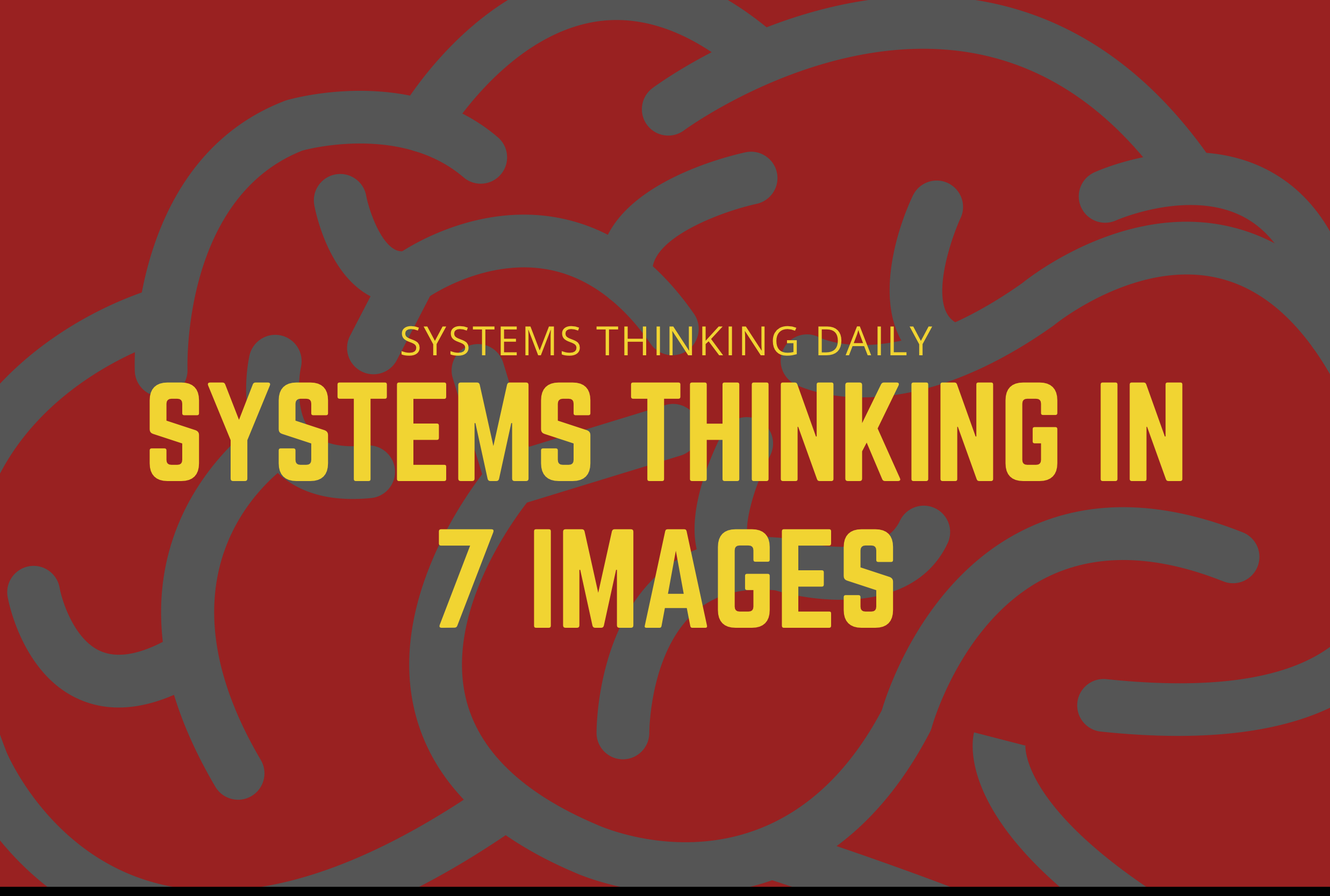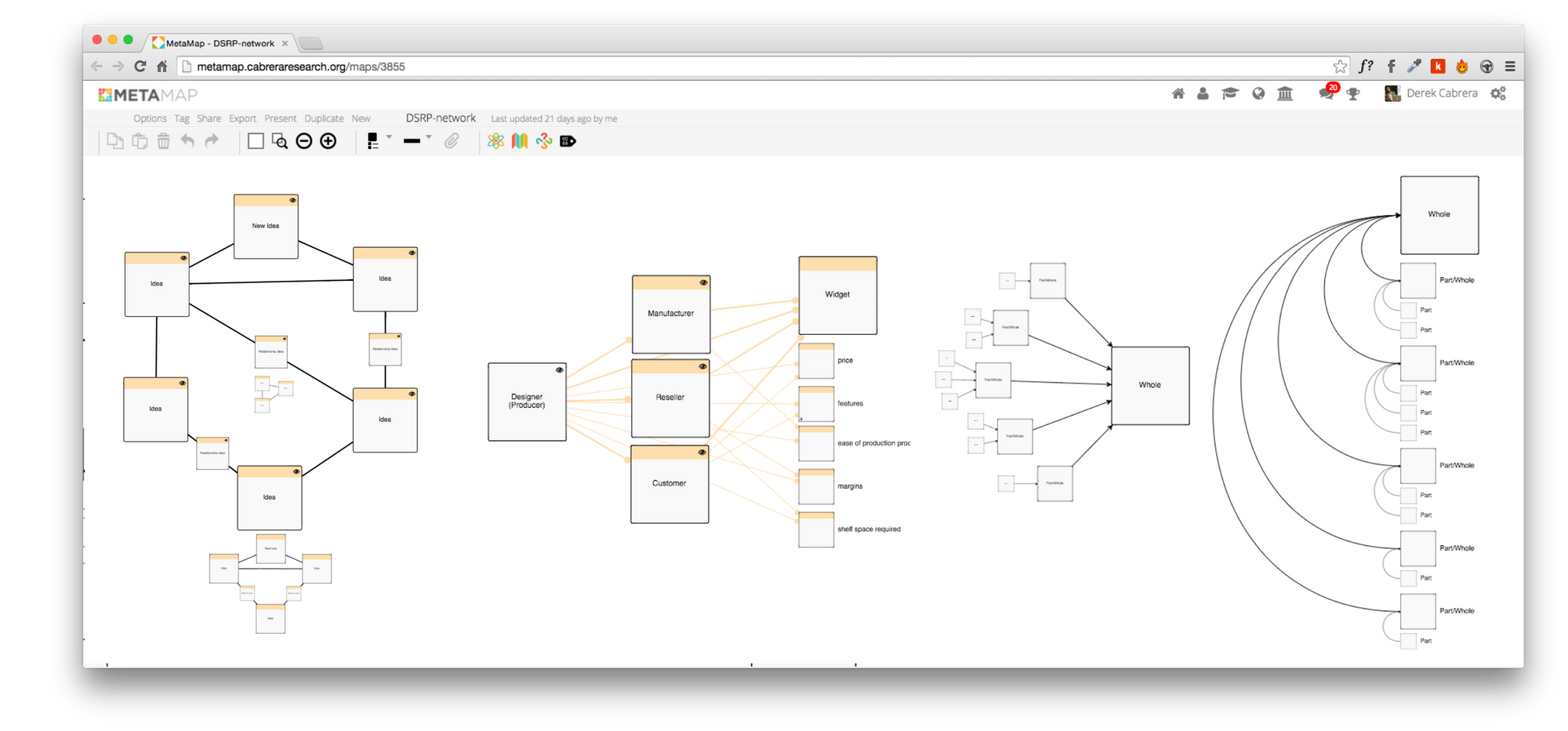The Most Important System in the Modern Company: An Internal Marketing System
Why we start organizations is intimately tied to why we choose to work together in the first place. If your goal is to create a garden in your back yard, you don't start an organization--because that's something you can do on your own. We start organizations because what we want to get done, requires others. That might seem like a simple concept, but it is where organizational effectiveness is lost or won.
 How do you get people to work together on something? There are lots of ways, from the despotic to the inspired. You can force them, leverage them, tell them, ask them, incentivize, or inspire them to do the job that needs to get done. But no matter what style of leadership you choose, you won't be effective if you don't have a shared mental model of the goal. In our garden example, if 10 people are working together on a garden and 3 of them think it will be 3 rows of vegetables, and another 3 think it'll be 4 rows of vegetables, and yet the final 4 think it'll be 12 rows - imagine the chaos that will ensue as they try to build a garden! They all do not share the same mental model of the task at hand. In other words, each of them have a different understanding of the task "build a garden." Sharing a mental model (meaning) is not the same as sharing information. The garden team all understood the information, "build a garden," but they did not share the same meaning of that information. Collaboration on a task that is not built on a shared meaning of the task is neither productive, nor is it collaborative.
How do you get people to work together on something? There are lots of ways, from the despotic to the inspired. You can force them, leverage them, tell them, ask them, incentivize, or inspire them to do the job that needs to get done. But no matter what style of leadership you choose, you won't be effective if you don't have a shared mental model of the goal. In our garden example, if 10 people are working together on a garden and 3 of them think it will be 3 rows of vegetables, and another 3 think it'll be 4 rows of vegetables, and yet the final 4 think it'll be 12 rows - imagine the chaos that will ensue as they try to build a garden! They all do not share the same mental model of the task at hand. In other words, each of them have a different understanding of the task "build a garden." Sharing a mental model (meaning) is not the same as sharing information. The garden team all understood the information, "build a garden," but they did not share the same meaning of that information. Collaboration on a task that is not built on a shared meaning of the task is neither productive, nor is it collaborative.
I like to think of all organizations like a large translucent beach ball. Imagine that you can see all of your people inside the beach ball. Some are pushing left, some are pushing right, some are milling about, and some are sitting around. The net result, the ball goes nowhere. Your teams are the same way. If they don't align their efforts in the same direction (often your vision) - they too - will go nowhere. This holds true whether you have 10 people or 100,000 people inside the beach ball, so you will need a committed minority inside your team that share the same mental model of why they should push, and in which direction to get anywhere.

 In fact, culture is built on shared mental models. Most notably, we need teams to share the same vision, mission and strategy (or VMCL). But the question is, how do you build culture? The answer: one mental model at a time (see CBG as a tool).
In fact, culture is built on shared mental models. Most notably, we need teams to share the same vision, mission and strategy (or VMCL). But the question is, how do you build culture? The answer: one mental model at a time (see CBG as a tool).
But, how do you build culture in a tactical way? This is the question that evades most leaders. The answer is much simpler than you might think. And, you'll be happy to learn that you likely already have and use all the methods, tools, techniques, and know-how you'll need in house. Where? In your modern marketing apparatus.
Let's say you have 2000 employees. Think of them as captive market that you have ready access to and the mental models--your Vision, Mission, Capacital Systems and Learning Systems (VMCL)--as the product you're selling. Currently, your 2000 employees are using a different product or products and you need to get them using your new product (your new VMCL). In most cases this is called cultural change or an organizational change effort. You need them to replace their existing or old mental models (the current 'product' they are using) with a new mental model (a new 'product' you're selling). The great thing is, you know exactly where your market lives, where they work, you already have their emails, and contact information. So far so good.
First, sign up for a new account of whatever marketing software you are using (e.g., HubSpot, Marketo, Salesforce, etc.) and add your market contacts (all 2000 of them).
Second, hire your internal marketing team (depending on the size and budget), either use internal people or hire new people specifically for your internal marketing department. We'll assume for this example that we will hire a new group to be called Internal Marketing or Culture Marketing. Here's who you're going to need:
- A Marketing Guru: this is the person who runs it all and brings modern marketing methods, techniques, skills, technology, etc. to the project;
- A storyteller/copywriter: A fantastic writer and storyteller to handle the storylines and wording;
- A graphic design wizard: Someone who can craft a style and a brand and execute it in beautiful and eye-catching imagery;
- A videographer: to capture the words, stories, and imagery on video and create short, entertaining, compelling videos;
- A researcher: someone who understands the marketplace because they have a knack for researching open questions and keep their pulse on the customer (your employees); and
- A web designer/coder: for all the times when you need to customize web or marketing interfaces.
Ideally, all of these folks gather in something that looks like a skunkworks as close to the CEO as possible so that there is little room for loss of signal in the message.
Third, build a website in the software to track page statistics and offer help. Don’t make it an ugly “internal” website. Make it as nice as your public facing website with its own stylesheets and brand guidelines. All of the organizations internal products (it’s mental models) starting with its most important ones (vision and mission) should be the ficus of the website. Offer a help chatbot to answer questions and be sure to follow the advice below on versioning. People who visit must feel like this is the source for the most up to date information the company has to offer. Be sure to use powerful storytelling, visual metaphors, consistent and tight text copy, and beautiful graphics and interactivity to communicate the value of these shared mental models. Everything about this site needs to say “this is not an afterthought” “this is important” “this is who we are.”
Fourth, decide on your first "culture building campaigns." These will typically start with the most important mental models: Vision and Mission. Then focus on capacity and learning systems, strategy, and descriptions of your product as both a drill and a hole. Next you'll focus on secondary but still critical mental models like your "culture code" or values. Other campaigns can center on tangible or intangible skills and attitudes that are holding your organization back (e.g., meetings structure, listening skills, trust, risk, or empathy). The point is, each one of these campaigns is run like a marketing campaign with goals, metrics, tracking and reporting. And lastly, different groups of employees in the organization (e.g., engineering versus sales) are different personas requiring different story boarding and messaging in these campaigns.
Fifth, stay frosty. When the CEO or leadership see a trend that concerns them, they must identify the trend (negative mental model), create a replacement product (positive mental model) and start a campaign. These could be as simple as an email "blast" and proceed along a continuum to include branded posters, collateral, training, education campaigns, incentives, and even larger systemic initiatives like "wow" stories. When you see something that needs to be addresses, build something with your team and start a new campaign to shift the mental model needed. Do be mindful of the number of campaigns going at one time--with a captive audience, you don't want to overwhelm them. So be sure to do the appropriate customer research to see what's hitting and what missing.
Wanna get started? Use the rules below to build your Internal Marketing system. Start with great mental models like those developed by VMCL...
Rule #1: Build a system for initial developments & updates to differentiate suggestions from ratified contributions (e.g., a wiki)
- Rule #1.1: Establish version control that allows for evolution across scale in the organization.
- Rule #1.2: Build a system for submitting changes that captures the impact of said changes.
- Rule #1.3: Structure meetings to include time to review suggested changes in situ.
- Rule #1.4 Create a visual codebook for Terminology conflicts that need attention. (e.g., differentiate among Norm, New, and Anchor & Twist.)

Rule #2: Build an internal marketing function akin to external marketing function to promote new mental models.
- Rule #2.1: Build a single source internal website for VMCL models. (Focus on internal employees getting on the same page to create adaptive decision making capacity).
- Rule #2.2: Manage campaigns to change a mental model (Build a campaign using creatives and marketing (e.g., use all the power, tools, and techniques of modern marketing on internal mental model shifts)).
- Rule #2.3: Put as much energy/resource into employee understanding of shared mental models as you do in creating the models. (remember; you can explain things to people but you can't understand things to people.)
Rule #3 Ensure effectiveness of this system using Litmus Tests:
- I can point to our VMCL;
- I can see evolution of VMCL (e.g., versions);
- I can point to FTE responsible for the design, marketing and shared understanding. (culture) of VMCL
- Internal campaign(s) are tracked like external marketing campaigns (reports and data based decision making)
- Results of an annual employee survey show the positive effects of a shared understanding of mental models on culture and productivity.
This is, of course, the tip of the iceberg. The benefit of building an Internal Marketing function in an organization that is designed to build a powerful culture based on commonly held mental models is obvious. But the added benefit is that you need not reinvent the wheel. Modern marketing techniques and know-how are readily available. The difference is your market is captive, your product is free. So, that makes your job even easier. The harder part is making the paradigm shift of products as mental models and competitive products as current mental models. Convincing the customer to switch to your product is simply an act of learning--changing one's mental model. Everything else about modern marketing applies, such as: building a prolonged and ongoing relationship and upselling, increasing engagement, developing targeted use cases, looking for "product" placement opportunities throughout the organization, product development based on customer (employee) needs, market segmentation based on different divisions, departments and personas, tracking engaged employees and seizing on teachable moments, identifying examples for incentives, success stories, wow stories and use case studies based on your current active customer base, market surveys to understand competitive mental models and show employees benefit of switching, and utilizing internal social media channels to spread as well as traditional media and digital/automation marketing. Suffice to say, there are so many possibilities for innovation the Internal Marketing space. It is my prediction that the companies that implement Internal Marketing based on modern principles of marketing and cognitive science and systems thinking will be the one's we are talking about and mimicking in the future (as we do with google and OKRs today).
.png?width=150&height=150&name=CRL%20GOAT%20Logo%20(4).png)



